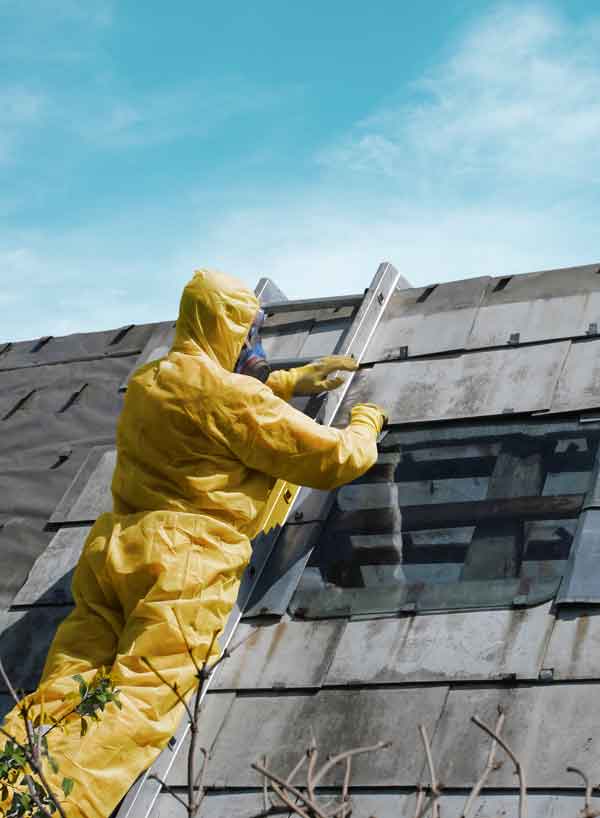Friable asbestos in the home
“Friable” asbestos is the most dangerous form. This describes the “crumbly” state of asbestos fibres. Imagine dry flour held out on the palm of a hand on a windy day and this will illustrate the danger asbestos offers on a windy day.
The difference is that asbestos fibres cannot be seen and they are dangerous, minute forms of rock that can be inhaled into the lungs and do fatal damage over time. The most dangerous situation for homeowners, is the discovery of building materials containing asbestos which are damaged, allowing asbestos fibres free to float in the surrounding air. The microscopic fibres of asbestos still remain the cause of about 170 New Zealand fatalities every year.
If fibres are floating free in the air of a home, it may be decades before any occupant or visitor, becomes aware that the fibres accidentally inhaled in one moment, are the cause of death many years later.
Asbestos in the home
Asbestos fibres are contained in many different forms of building materials. The most common in New Zealand include:
Homes built up to the year 2000 probably contain asbestos. The incidence declines after this year as regulations began to eliminate asbestos from all building materials. However, any home built in the early part of the 21st century may still contain some asbestos.
For homes built in earlier years, the likelihood of asbestos can be found in:
Old floor tiles,
Ceiling tiles,
Roof shingles and flashing,
Some exterior cladding
Interior wall linings.
Insulation (around boilers, ducts, pipes, sheeting, fireplaces),
pipe cement, and joint compounds
Emergency steps to take when damaged building materials containing asbestos, are discovered:
Immediately close off the area.
Call a licensed asbestos removal company and arrange the urgent “sealing” of the asbestos materials.
If the area is indoors, this may be easier.
If the area is outdoors, safety is more difficult to determine.
Tackling damaged asbestos materials indoors:
Close doors to seal off the area. Also “seal” the joints in the doors and windows. Asbestos fibres are microscopic and can be blown through the smallest of crevices.
Leave external doors and windows open so that airflow can remove any potentially airborne fibres.
Cover the floor with heavy-duty plastic sheeting to catch dust, debris and asbestos material.
Keep family, visitors and pets away from the area until the work is completed.
Tackling damaged asbestos materials outdoors:
Keep neighbours safe by informing them and discuss any protection they might need to take, such as keeping windows and doors closed for the duration of the work.
Seal off the indoor areas of the home from the outdoor areas, close windows and doors, seal off any other crevices.
Cover the surrounding ground area with heavy duty plastic. Asbestos fibres can be trodden or float to ground level and remain there for years. Remember that asbestos is pre-historic rock and will not decay. It can become dangerous at ground level, uplifted by the next strong wind or when the soil is disturbed.
Any household goods such furniture, toys, tools , even motor vehicles, are best removed from the work site. They can all be potential carriers of asbestos fibres.
Keep household members, visitors and pets away until the work is completed.
Things NOT to do:
It may seem logical to wet down areas containing asbestos fibres, but this is not always helpful and may cause further dangers for people, especially if asbestos roof tiles are being removed.
Work during high wind. The safest option is to keep the wind off the damaged area with heavy plastic sheeting and weights. Begin the removal, preferably by licensed asbestos removal services, once the weather is calm.
If you aren’t sure about the state of the asbestos in your home, call a licensed asbestos assessor in to give you an educated answer. Once you’re sure that the asbestos is friable or not, make a plan about how you will deal with it. Chemcare is happy to consult with you to find the best asbestos management plan for you.



